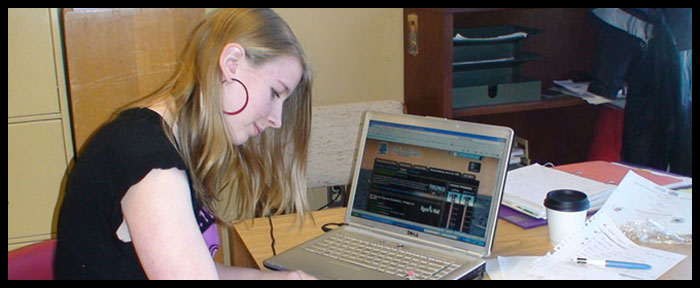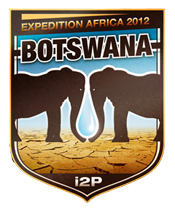

From the Water and its Effect on Human Development and Biodiversity curriculum, your submissions will be posted here! You may invest in a few of our suggested modules, as many as possible, or use modules of your own. What matters most is that you develop your own ideas into questions within the module, develop a plan to investigate that question with your own experiments, and prepare final outcomes. Suggested formats for your final outcomes can be in video & photo (with descriptions) or a text document (PDF or Word) - be creative! Make sure you send in your questions to Q&A, view daily videos, photos and journal reports from the Youth Ambassadors, and take part in the live videoconferencing!
You can email Your Submissions to Jordan Thoms, Tweet us @GOi2P or post them on our Facebook Page!
Phase 1 - Engagement and Stimulation of Imagination
Module: Make Your Connection Into The Kalahari
-
Trading Snickers for Seswaa: My Adventure to Botswana - By Hope McCarty, i2P Youth Ambassador
Botswana is a long way from home. More than twenty hours aboard a plane and then many more miles by train and truck. When I finally arrive in late October, there won't be any Big Macs or apple pies to satisfy my cravings. No pizzas, potato chips or pancakes to remind me of home.
Read more...
-
Tsamma Melon - By Saskia Vaisey, i2P Youth Ambassador
A cousin of the watermelon so popular in summertime, the smaller, less sweet Tsamma melon grows wild in Botswana's Kalahari. In fact, these melons are widely believed to be the ancestors of today's commercial varieties. Botanically, they are the same species. Tsamma melons survive in dunes and bud from a creeping plant with bright yellow flowers and hairy stems.
Read more...
-
Breanna & Hannah learned that plants & vegetation of the Kalahari region have to adapt and really "dig deep" for water & nutrients in order to survive the desert climate.
Education Team - Day 1 from GOi2P on Vimeo.
-
The Black-Backed Jackal - By Breanna K. Cornell, i2P Youth Ambassador
The black-backed jackal is found throughout southern Africa, the eastern coastline of Africa, but has a stronghold in the Kalahari Desert. The black-backed jackal, living up to twelve years, is the oldest thriving member of the genus Canis. The black-backed jackal is extremely adept; it lives in habitats varying from arid coastal desert and savannah to grassland and farmland.
Read more...
-
Gemsbok (also referred to as Oryx) - By Nansen Weber, i2P Youth Ambassador
As my animal of discussion I chose the Gemsbok or as most people know it by the Oryx. To me the Gemsbok is most iconic animal of the Kalahari Desert. They can often be seen wandering the red sand dunes throughout the Kalahari. They are truly the antelope of the dessert. In Botswana Kgalagardi Transfrontier Park and Kalahari Gemsbok National Park in South Africa where named after them.
Read more...
-
Short report on the economic and social impact of HIV/AIDS on Botswana - by Marie Donovan, i2P Youth Ambassador
I wanted to tackle this question by first providing a few figures to introduce the vastness of this issue; secondly, to look at what its social impact has been; third, what its economic impact has been, and lastly, to become informed about what has and is being done to combat this issue.
Read more...
-
Speaking the Language of the Locals - by Marie
We were like travellers in any other foreign country, facing the deepest cultural and linguistic barrier many of us had ever experienced. I expected us to be able to communicate perhaps on some level, but I had no idea it would be so positive and encouraging. Two incidents in particular stand out in my mind as beautiful examples of how effective certain universal forms of communication can be.
Read more...
-
Universal Communication, a Smile - by Saskia
We've mostly crossed sandy roads through scraggly bush or crunchy Salt Pans, but we've also shared smiles and gestures with several Batswana. Our convoy of conspicuous, canvas-roofed safari trucks attracts attention whenever we pass people, as if a magnifying glass is held to us.
Read more...
Phase 2 - Learning to Use the Scientific Method and its Adaptations
Module: Determine How Much Water Your Body Needs
-
Youth Ambassador Water Uptake
Each Youth Ambassador's water intake is plotted as a different color, and more data will be added to the plot during the expedition. Be sure to check back in a few days to see if the Youth Ambassadors adapt to the heat in the short span of a week. Click the image below for the full discussion on water intake during the expedition!

-
Gill & Hannah have discovered that the i2P Youth Ambassadors are drinking much more water in Botswana to stay hydrated. To perform your best in running & in every day tasks, it's very important to keep hydrated!
Education Team - Day 2 from GOi2P on Vimeo.
Module: Build The Ideal Water Filter For An Expedition
-
Breanna & Professor George show us different methods of water filtration. Don't forget! Although the water may be filtered, you should still disinfect it. We challenge your class to build a water filter & learn how your community treats water!
Education Team - Day 3 from GOi2P on Vimeo.
Module: Is Water Critical To A Plant's Life Cycle?
Phase 3 - Perspective and Awareness
Module: What Is The Cost & Benefit Of Having Drinkable Water In Your Community?
Module: What Are Your Top 10 Necessities In Life?
-
Here are lists of top 10 essentials for the Kalahari Desert, for our Youth Ambassadors at home, for Ray's kitchen and for Pete in Nunavut! What essentials would you need for other extreme environments?
Top 10 Necessities from GOi2P on Vimeo.
- Top 10 Necessities submitted by students & schools » click here
Module: Successes & Failures In Planned Human Interventions In Ecosystems
-
i2P Youth Ambassadors Saskia Vaisey & Marie Donovan explore the complexities of human intervention in an ecosystem; in this case, the pros & cons of implementing fences to preserve the livelihoods of the people in Botswana. However, these fences also interrupt the migratory patterns of other wildlife.
Education Team - Day 7 from GOi2P on Vimeo.
Module: Create A Sustainable Project
Module: What Are People In Botswana Saying About Water?










